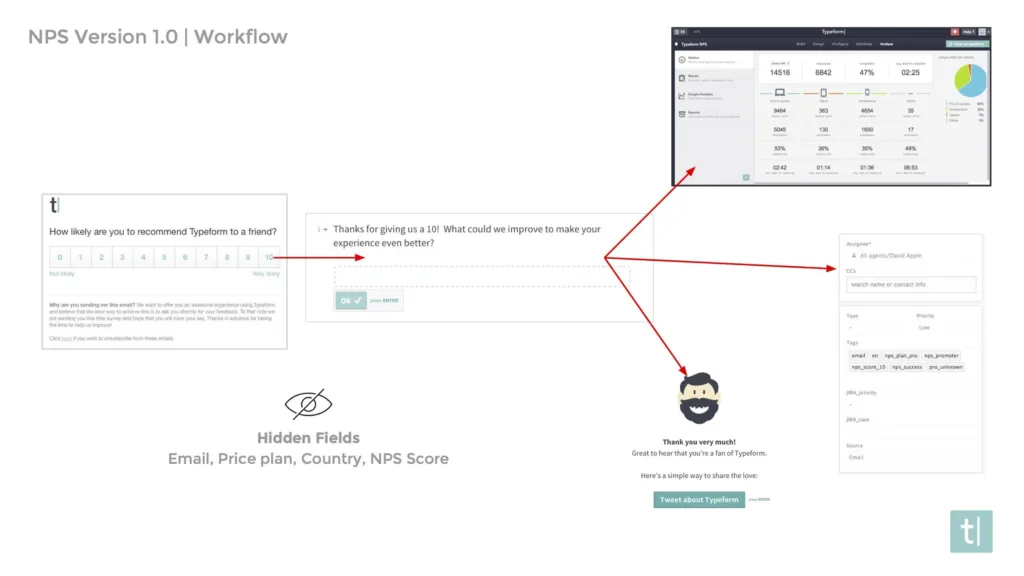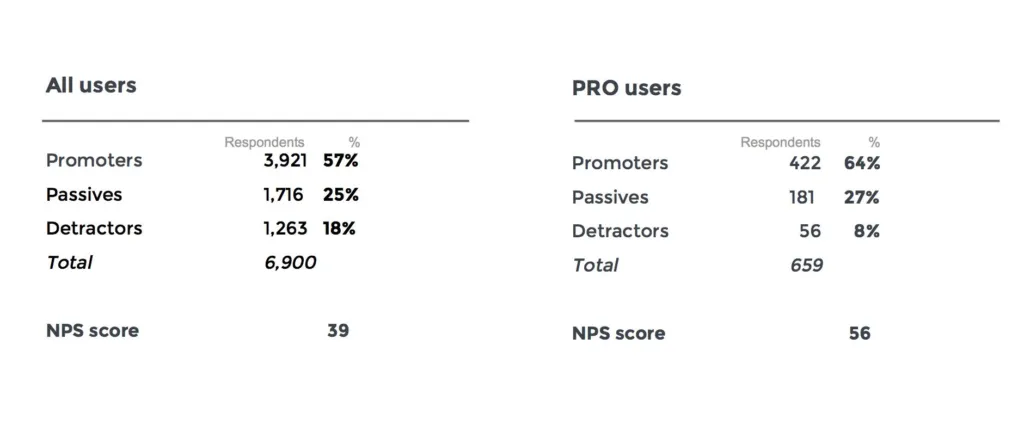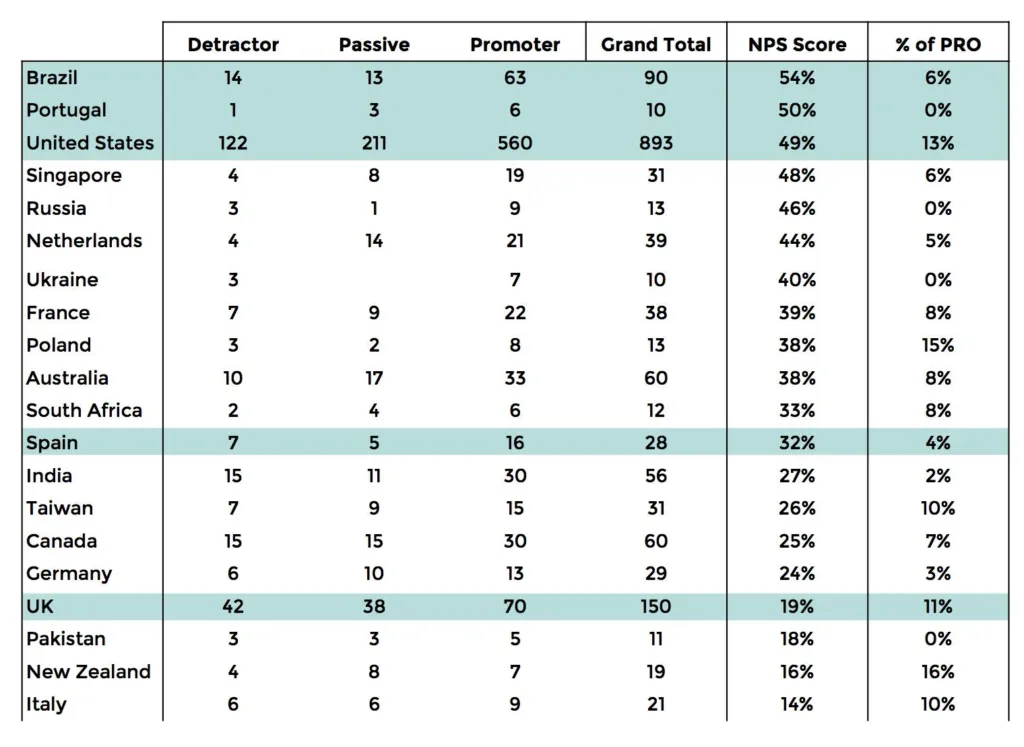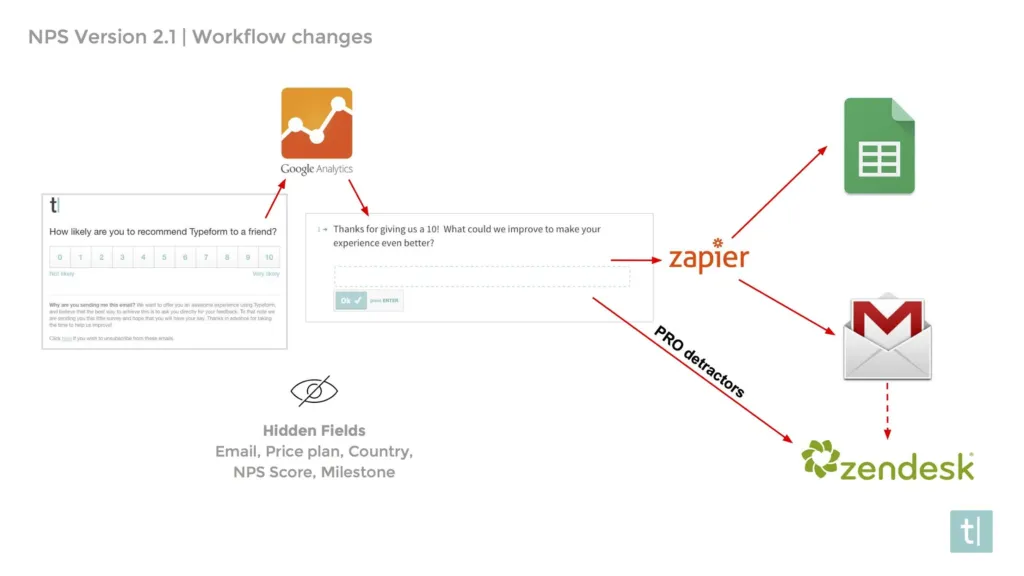How net promoter score can influence your decision making
If your customers are quietly harboring resentment around your product, wouldn’t you want to know why? If a large number of customers wish your product had a particular feature or workflow, wouldn’t you want to know that?
In the end, the market doesn’t give a damn about your company or product. It wants what it wants, when it wants it. If you can’t deliver, then adios-sayonara-see ya later. So it’s imperative that you know what customers are thinking and saying about you.
If you’re involved in a SaaS company or use a subscription-based business model, getting valuable feedback from customers is priority numero uno. Things move fast, and customers are fickle when it comes to products. So acting quickly on feedback is crucial when it comes to customer retention, especially when your product is being evaluated on a month to month basis.
To start collecting feedback, prominent companies like Apple, Zappos, and Facebook use the Net Promoter Score or NPS.
While some believe NPS is flawed, others view it as a valuable tool for providing your team with critical feedback.
At Typeform, we use NPS as a systematic way to collect our customers’ feedback, secret wishes, and anything that bothers them. We also use it to close feedback loops and get value back into the hands of customers fast.
NPS in the wild
What’s that motto? Fail fast? Try learn fast. Make mistakes, correct them as fast as you can, learn, and repeat. A first run at NPS will be no different.
Here’s the nuts and bolts of our first version of NPS:
- Sent NPS survey to over 11k customers
- Included a mix of free and PRO users (we employ a standard freemium business model)
- Selected most active customers
According to David Apple, Typeform’s director of customer success, we expected to get a 7% response rate. Instead, we got a 14% response rate. Not only that, but most responses came within 48 hours.
How do you get that volume of responses? Create automated workflows.
Create a workflow
To get the most out of your NPS experience, set up an automated workflow (our first NPS run wasn’t entirely automated and drowned our CS team in support tickets—I’ll explain later).
Start by sending NPS surveys via email to your most active customers (we used Intercom). Next, collect data with your favorite NPS tool. For our workflow, we used Typeform (duh) and a neat feature called Hidden Fields to segment our results.
Hidden Fields are cool because you can tag every typeform with its own tracking ID. This is helpful because you can track who responded, what pricing plan they’re on (in our case: free or PRO), what country they’re from, and their NPS score.
Here’s how the first version of our workflow looked:
 If you’re familiar with NPS, then you understand that anyone who answers with a 9 or 10 is considered a Promoter—a person more likely to promote or advocate on your behalf.
If you’re familiar with NPS, then you understand that anyone who answers with a 9 or 10 is considered a Promoter—a person more likely to promote or advocate on your behalf.
Anyone with a score of 7 or 8 is considered Passive, and can live with or without your product.
And anyone who scores in the range of 0-6 is a Detractor—someone more likely to spread negative juju on the interwebs and detract from your best efforts.
Take a look:
 To recap,
To recap,
- Email customers your NPS survey.
- Customers answer Question 1 within the email.
- Once they click on a number, they’re taken to a typeform for Question 2.
- Segment your results.
Segment your results
To make this actionable, you’ll need to segment your data. It made sense for us to separate our free from paying users.
Here’s what we did:
 Of course, you’ll probably want to segment your results based on your pricing model. Do what makes sense for you.
Of course, you’ll probably want to segment your results based on your pricing model. Do what makes sense for you.
We also segmented by cohort milestone:
 Notice the 33 NPS score after being with Typeform for one month jump to a 37 NPS score after 6 months. From this, we can assume that customers are getting far more value from the product as time goes on.
Notice the 33 NPS score after being with Typeform for one month jump to a 37 NPS score after 6 months. From this, we can assume that customers are getting far more value from the product as time goes on.
And finally, we segmented by country:
 This gives us a different perspective. The United States remains our most active user base. This influences major marketing decisions, from our choice of language (US English) to allocating resources for marketing campaigns.
This gives us a different perspective. The United States remains our most active user base. This influences major marketing decisions, from our choice of language (US English) to allocating resources for marketing campaigns.
Ok, now that the feedback is in, time to do something with it.
Discover brand advocates
Each segment requires a different approach. You’re not going to talk to Promoters like you talk to Detractors.
And the Passives? They’re generally ignored in most Net Promoter Systems. The strategy behind ignoring Passives is that if you listen closely to Detractors and address their concerns, those solutions will impact Passives as well—a case of a rising tide lifting all boats.
Let’s start with Promoters. Focus your referral efforts on this segment. Our first cohort of Promoters were asked to tweet their appreciation of Typeform, and this led to over 100 signups. Not bad, eh? We also keep a Wall of Love for popular tweets here.
For Detractors, we funneled them through Zendesk, and created support tickets. Then, a customer success team member contacted each Detractor personally because we wanted to immediately acknowledge their feedback. Hopefully, customer success could offer solutions that didn’t require coding a new feature on the spot.
And it’s important to respond to everyone. That’s right. Our diehard customer success team responded to every single person that gave feedback. Whew!
Let’s do the math. 11k emails sent out, 14% responded, that comes out to roughly 1,540 people.
We were excited to get so much engagement, but the volume overwhelmed our CS team and it took two weeks to respond to every ticket. Be careful what you ask for.
NPS V2.1
Since our first NPS experiment, we’ve improved and streamlined our workflow, and automated the entire process.
For example, we no longer send NPS surveys to free users. Instead, we focus on PRO or now PRO+ customers. Retaining paying customers is a higher priority.
Now we send responses collected from our typeforms into a Google Sheet and tag them for further analysis. Tags include feature requests, difficulties around integrations, UX issues, reporting issues, pricing, etc. This information arms product and marketing teams with the ammo they need to build a better product, improve messaging, and tighten up product/market fit.
When customers submit their NPS scores, Detractors are still given priority and a support ticket goes straight into Zendesk—same as before. But now, instead our CS team responding to all feedback, customers are given an option to provide more information. They can simply reply to our “thank you for taking our survey” email. If customers reply to that email, they’ll get a personalized response from our awesome CS team. Beats two weeks of nonstop emailing.
At first, we ran our NPS after one month and another after 6 months within one cohort. Instead, send your NPS after 20 days. If people aren’t happy, you still have time to address their problems or concerns.
We found that sending an NPS survey at the one month mark was problematic. What if customers had a bad experience? For PRO customers on a monthly plan, that’s just inviting people to churn.
Remember: don’t run your first survey after one month if subscribers are on a monthly plan.
Here’s how NPS workflow v2.1 looks:
 Final thoughts
Final thoughts
The creators of the Net Promoter System at Bain and Company encourage you to focus solely on Promoters and Detractors. Give attention to Detractors immediately. If they start spreading vitriol, your brand will take a few hits. With a little nudging Promoters will advocate and promote on your behalf. Anybody want free marketing from raving fans? I bet you do.
Remember, if your NPS feedback isn’t actionable then it’s useless. You’re not doing this to frame your NPS score on the wall. Close feedback loops as soon as you can. The faster you do, the faster you support customers in their goals, the more valuable your business becomes.
Remember your goal with NPS: improve the experience, not the score. Take that (and your money) to the bank.